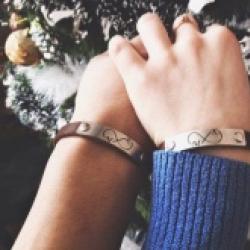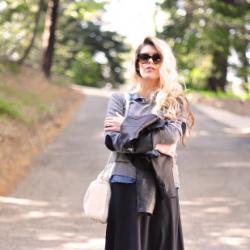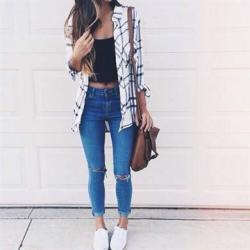Crochet baby socks. Step-by-step master class on crocheting baby socks for beginners - model for babies How to crochet small socks for newborns
Greetings, my dear reader!
If you want to crochet socks for the first time, then you are probably looking for a simple and understandable description.
As always, in it I tried to show clearly and in detail the whole process and share my work and experience.
For knitting we will need:
- Yarn. In general, it is better to knit socks not from pure wool, but, for example, with the addition of acrylic. It is important that the socks are durable and last longer. And clean wool wears out faster. Once I knitted pure wool socks, and they didn’t last long; they were worn out and all the wool was matted. In general, I don’t recommend it. Although they were warm. Therefore, it is better that the yarn contains about half wool. For socks you need about 100 grams of yarn. Depends on size.
- Hook. Select the hook number that matches the thickness of the thread. You can see an example . To knit an elastic band, it is better to take a hook 1 size smaller than the main one. If you knit socks No. 3.5, then elastic band No. 2.5.
- Marker (or regular paper clips, you can use a thread of a different color - whatever you have on hand)
- Scissors.
Knitting an elastic band
We will knit the elastic in turning rows, grabbing the back half-loop.
We collect a chain of 16 air loops + 1 lifting loop. Those. only 17 loops.

We knit the first row with regular single crochets in each loop.
We make 1 lifting loop, unfold the knitting and now knit with single crochets behind the back half of the loop, as in the photo:

Also all other rows. We knit the last loop of each row using both halves of the loop so that the edge is neat.
IMPORTANT! For the last loop, pull the thread harder, then the edge of the elastic will be more elastic.


So we knit the required number of rows. I knitted 34 rows.
Now we connect the two edges of the elastic band and, as it were, sew them together with connecting loops. We insert the hook as in the photo, grabbing the back wall of the loops of one and the second edge, grabbing the working thread and pulling it through both loops and the loop on the hook at once.


Here's our rubber band:


And now we will knit single crochets in a circle without lifting loops. One stitch in each row of elastic. Just turn the elastic band right side up. We will knit from the front side. We knit the required number of rows to the bone, which is on the side of the leg. It's better to try it on to see how much to knit.

Knitting the heel
In general when knitting crochet socks There are different ways to knit a heel. Well, at least two. I knitted both ways, but one of the methods just doesn’t work out for me, even though it seemed simpler at first. Oh, I suffered with it, I bandaged this heel about 15 times for sure. But it still doesn’t work out as it should. Well, okay, so it’s not mine.)
Therefore, here I am sharing a method for knitting a heel, which I can do easily and simply. And the heel comes out smooth and neat.
Let's count the total number of loops, I got 36. Now we divide in half. It turns out 18. That is, one half. We will knit these 18 loops in turning rows. Turn the knitting and knit 18 single crochets in the opposite direction. We will get a rectangle. We knit until the height of the rectangle is equal to half its width.

Now we will make a rounding of the heel. Divide 18 loops into 3 parts. It turns out 6 loops. If you get an uneven amount, then leave a smaller number for the middle. For example, if you have 17 loops. Divide by 3, we get 6+6+5. This means we will leave 5 loops in the middle, and 6 from the edges.
I have all 3 parts of 6 loops.
We knit the first 6 loops. The next 6 stitches are single crochet. Now in the next loop we make a decrease - we make 1 unknitted single crochet, and in the next loop a second unknitted single crochet. This resulted in 3 loops on the hook. Now we knit these 3 loops together.

We unfold the knitting and knit a single crochet not in the first, but in the second loop. This is how we knitted our 6 stitches. And again a decrease. Unfold again and knit 6 single crochets from the second loop.

And again a decrease:

We continue this way until we have knitted all the remaining loops of the rectangle.
This is what the heel looks like:

In two corners we make decreases - we knit 2 unknitted single crochets together. It is important here to ensure that each decrease goes exactly above the decrease of the previous row. To avoid confusion, mark the decrease points with a marker or insert threads of a different color.
Here's a look at the photo:

We knit 3 loops together:

So we will decrease (2 decreases in each row) until we reach a width equal to the width of the sock above the elastic (where we knitted the rows from the elastic in a circle).
When we have finished knitting with decreases to the desired width, we continue to knit in the round without decreases. We knit the required length of the sock - up to the beginning of the toes.

When we have reached the place where the toes begin, we shape the toe.
Knitting a toe
To finish the sock, we will make decreases. 4 in each row. Two on the sides - on the left and on the right edge, one on the front and one on the back. That is, one decrease is opposite to another. Here we also make sure that each decrease goes above the decrease of the previous row and does not move. To avoid confusion, mark the decrease points with a marker or insert threads of a different color.


Here we are ready crochet socks:

Take part in the blog and win a prize!
Be sure to subscribe to new master classes so as not to miss all the fun!

Socks and many, many other useful things. But not only goods purchased in the store should be present in the baby’s wardrobe. Particularly valuable are the tiny clothes knitted by hand, in which all the mother’s affection, tenderness and love are invested.
Things are knitted easily and simply, the main thing is to choose the right thread that will not cause allergies in the baby. 100% cotton is especially suitable for these purposes. And if you are eager to knit something for your baby, I suggest starting with the simplest thing - crochet baby socks for a newborn from 0 to 3 months.
In order to crochet socks we need:
- pink and white cotton threads
- hook No. 2
- tapestry needle
Crochet baby socks, master class for beginners:
So let's get started...
Take pink threads and knit ten single crochets into an amigurumi ring. 
We close the ring and then knit as indicated below:
1st row: row x 10 times = 20 stitches
2p.: (st.b/n, pr-ka) x 10 times = 30 loops
From rows 3 to 5 we knit 30 single crochets in each row. We get such a connected figure in the shape of a bowl. 
We cut off the pink thread and in its place we attach white yarn and knit from rows 6 to 14 of the st. without a crochet. 
At this stage, we will begin to form the heel of our socks, for which we will cut the white thread and attach the pink one. We knit 15 tbsp. without crochet and unroll the knitting. Next, from rows 16 to 23, we continue our knitting in the forward and reverse directions. 
Then we sew the bottom of the heel with hidden stitches, using a tapestry needle and thread of the same color. 
Again we change the color of the pink thread to a white thread and we will form the boot. To do this, we knit 7 tbsp on the side of the heel. without crochet, then 15 tbsp. without crochet and on the second side of the heel also 7 tbsp. without a crochet. 

Now we knit in a circle with single crochets for about 10 rows (it all depends on how high you want your booties to be, for my booties this amount was enough for me). 
We change the white thread to pink and knit one row with single crochets. 
Our knitting is coming to an end, all that remains is to make an openwork edge for our socks. To do this, we knit 5 tbsp in the second loop of the bottom row from the hook. with a double crochet, then through one loop we knit a single crochet and again in the second loop from the hook 5 tbsp. double crochet By knitting in this way until the end of the row, we get beautiful shells. 
We will knit these topulets. Red and pink are knitted the same way, only the piping at the bottom is different.

I knitted with threads "Sun" 400m/100g, 100% cotton, hook 0.85
First we knit the base of our shoe; it can be used in many other booties. But everything is in order.
We start with the insole, knit it according to this pattern 
tie a chain of 10 chain stitches
1p - 2c.p. rise, 3 half double crochets (p.st.s/n) in the first loop, 8 p.st.s/n in each subsequent loop, 7 p.st.s/n in the 10th loop, 8 p.st. s/n on the back side of the chain, 3 p.st. s/n in the last loop, conn.st.
This is what happens
2 rub. -2 st. rise, st. st. s/n, 2. st. st. s/n from one. loop, 2 st. st. s/n from one. loop, 10 st. st. s/n in each of the subsequent loops, 2.st.c.s/n from one.loop, 2.st.c.s/n from one.loop, 3.st.c.s/n from one.loop, 2.t.c.s/n /n from one.loop, 2p.st.s/n from one.loop, 10p.st.s/n in each of the subsequent loops, 2.st.st.s/n from one.loop, 2p.st. s/n from one loop, p.st. s/n., connection st.
3 rub. -2in.p. lifting, p.st.s/n, 2.st.st.s/n from one.loop, p.st.s/n, 2.p.st.s/n from one.loop, 12p.st. .s/n in each of the subsequent loops, 2.st.s.s/n from one.loop, p.st.s/n, 2.st.st.s/n from one.loop, p.st. s/n, 2.st.st.s/n from one.loop, p.st.s/n, 2.st.st.s/n from one.loop, p.st.s/n, 2. st.s.s/n from one.loop, 12 st.s.s/n in each of the subsequent loops, 2.st.s.s/n from one.loop, p.st.s/n, 2. p.st.s/n from one.loop, p.st.s/n, connection st. 
4 r.- v.p, 2 tbsp. b/n from one loop, treble b/n, 2 tbsp. b/n from one loop, treble b/n, 2 tbsp. b/n from one loop, 3 tbsp. /n in each from the last loops, 11 st.st.s/n in each of the subsequent loops, 2.st.st.s/n from one.loop, st.st.s/n, 2.st.st.s/n from one.loop, p.st.s/n, 2.p.st.s/n from one.loop,p.st.s/n,p.st.s/n,2.p.st.s/n from one.loop, st.st.s/n, 2.st.st.s/n from one.loop, st.sts/n, 2.st.st.s/n from one.loop, 11 p. treble s/n in each of the subsequent loops, 3 treble b/n in each. from the last loops, 2 tbsp. b/n from one loop, treble b/n, 2 tbsp. b/n from one loop, treble b/n, 2 tbsp. b/n from one loop, conn. st.
The insole is ready!
Now, without tearing off the thread, let's start knitting the sides,
1.r - 2 v.p. lifting, make a yarn over and insert a hook under the posts, like this
Thus we tie the entire insole p.st.s/n in a circle
2.r -2v.p. rise, 62p.st. s/n. in a circle, connection art. 
3 rub. - 2 chain stitches for raising, 22 chain stitches for s/n, here the decreases begin - 2 chain stitches for s/n are knitted together, like this 
then comes p.st.s/n, 2 p.st.s/n together, p.st.s/n, 2 p.st.s/n together, p.st.s/n, p.st. s/n, 2 p.st.s.s/n together, p.st.s/n, 2 p.st.s/n together, p.st.s/n, 2 p.st.s/n together, 22p.st.s/n, conn.st.
4.r - 2 ch.p. rise, 21 p.st.s.s/n, 2 p.st.s.s/n together, p.st.s/n, 2 p.st.s/n together, p.st. s/n, 2 p.st.s.s/n together, p.st.s/n, 2 p.st.s/n together, p.st.s/n, 2 p.st.s/n together, 21p.st.s/n, conn.st. 
5p. - 2p. lifting, 17 st.b/n, 2 p.st.s.s/n together, p.st.s/n, 2 p.st.s/n together, p.st.s/n, 2 p.st.s /n together, p.st.s.s/n, 2 p.st.s.s/n together, p.st.s/n, 2 p.st.s.s/n together, p.st.s/n, 2 p .st.s/n together, 17st.b/n, conn.st.
The base for the shoe is ready!
Insert the hook into 14 stitches from the knot, make a double crochet stitch and knit a chain of 12 chain stitches.
insert the hook into the 2nd stitch from the hook and knit a double stitch and another 9 double stitches, one in each loop of the chain, connecting st. into the base of the bootie (sidewall), but not exactly into the loop with which we started, but into the adjacent one. 
turn the knitting and knit 10 single stitches, 6 chain stitches (this is the future loop) and another 10 double stitches on the other side, connecting the stitch to the base of the bootie. 
Now you need to tie a contrasting thread around the entire top in a circle, using a double stitch, in a vp arch. for the loop we knit 8 stitches.
The top is ready. Now let's start tying the bottom, starting from the center behind the bootie, using a crochet hook we grab 2 loops of the braid that we formed during the transition from the insole to the sides and knit a row of shuttlecocks: *st.b/n and st.s/n in one loop, c. p, skip one p.* - so in a circle until the end.
All that remains is to sew a flower, a button and beads into each shuttlecock. If the beads are large, then first we knit the first row in double stitch, and only then the row with the shuttlecocks.
This is what the resulting shoes should look like 
Booties No. 2
We knit the base as in the previous case, only after the 5th row we do not cut the thread, but knit another row
6r. - 15 st.b/n, p.st.s/n, 2 p.st.s/n together, p.st.s/n, 2 p.st.s/n together, p.st.s/ n, 2 p.st.s.s/n together, p.st.s/n, 2 p.st.s/n together, p.st.s/n, 2 p.st.s/n together, p. st.s/n, 15 st.b/n, conn..st. 
Now cut the thread and fasten it.
From our knot, count 15 sts in reverse order and insert the hook, we will knit as if from the inside out, in reverse order, this is the binding of the front part. 
make dc and 2 more dc in one loop, vp, skip one loop, again dc and 2 dc in one loop, vp, skip one etc., you should get 6 shuttlecocks, double stitch, a chain of 12 chain stitches and a connecting stitch in the loop with which we started. Oh, I don’t know if I wrote it clearly now?
3 ch rise, * ch, skip one st of the previous row, treble s/n * -19 times, ch, connect st.
*st.b/n in the arch of the previous row, v.p* - in a circle to the end, finish connecting st. 
Top tying: with contrasting thread - 1 r.-c.p., *st.b/n in air st. previous row, ch* - in a circle to the end. 
2p. - v.p. St. b/n, st. previous row. Knit these flounces in the round until the end. 
Bottom binding for pink booties: like shoes.
Bottom binding for red booties:
we knit with red threads - with a hook we grab 2 loops of the braid that we formed during the transition from the insole to the sides and knit:
1st row - *st.b/n, 2ch, skip one loop* - in a circle to the end.
2nd row - in each arch from v.p. - double treble, 2 double treble, double treble, until the end in a circle.
We carefully fasten and hide all the threads, sew on flowers, beads, thread a ribbon, elastic band or knitted lace (whichever you like best) and get this beauty! 
In this master class we will show you how crochet baby socks. These socks are perfect for both cool weather and winter if you change them to yarn containing wool. If you want, once you understand the principle of knitting children's socks, you can knit them for any adult.
To work you will need:
- About 40-50 g of Pekhorka “Children's novelty” yarn, light green color (100% acrylic, 200m-50g);
- Hook No. 2.
Legend:
- VP- air loop;
- RLS– single crochets;
- SS– connecting column;
- *……….* - repeat until the end of the row.
The first part of the video master class on knitting an elastic sock:
The second part of the video master class on knitting sock heights:
The third part of the video master class on knitting the heel of a sock:
The fourth part of the video master class on knitting a toe:
Our explanations for the video master classes on knitting children's socks:
We knit an elastic band and the height of the socks
We cast on 10 air loops, 1 VP, we knit the entire row with RLS. We knit with straight-turn knitting. From the 2nd row you need to start knitting sc in the back half loops and at the beginning of each row knit 1 ch. The result is an elastic band with a ribbed surface. Fold in half and join the beginning and last rows of the SS. It turns out to be a pipe through which the child’s heel should pass. We have a length of 20.5 cm and a width of 3.5 cm. Turn it inside out and begin knitting the base of the sock. To do this, we cast on loops around the elastic band. It turned out to be 36 loops. Next we knit 9 rows in the circle. The height of the sock, together with the elastic band, was 6.5 cm.


We knit the heel
Divide the knitting into 2 parts, mark 18 loops each. One part remains unknitted. We divide the second part by 3, resulting in 6 loops. These stitches should remain at the end of all decreases. We knit one part of the sock in straight-turning rows (18 loops). At the beginning of each row, we do not make a lifting loop and knit from the second loop of the RLS, and at the end we do not finish one loop. Thus, the number of loops is reduced. Continue knitting until there are 6 loops left. Now we begin to round the heel by adding loops. To do this, at the beginning of each row, we knit 2 loops, and at the end of the row we knit 2 additional side loops. We knit with straight-turn knitting. By adding side loops we form the heel. After knitting all the side loops, you should get 18 loops, as on the side that has not yet been knitted.
In rows it looks like this:
- 1st row: 18 loops;
- 2nd row: 16 loops;
- 3rd row: 14 loops;
- 4th row: 12 loops;
- 5th row: 10 loops;
- 6th row: 8 loops;
- 7th row: 6 loops. And we begin to add. To do this, first mark each side row with a thread of a contrasting color so as not to miss them while knitting. There are 7 pieces on each side.

So, we knit 6 loops plus in the second and third side row along the loop and, turning the knitting, we knit a new row from the second loop. This row results in a total of 8 stitches.
- 8 row: 8 + 2 side = 10 loops;
- Row 9: 10 + 2 = 12 loops;
- Row 10: 12 + 2 = 14 loops;
- Row 11: 14 + 2 = 16 loops;
- Row 12: 16 + 2 = 18 (at the end there should be 1 contrasting thread left on each side (these are the first 18 heel loops). Next, knit the 19th loop in the next gap, then mark the beginning of the row and knit 18 front loops + 2 loops connecting heel with the top of the toe, and 18 more. In total, at the end of the row you will get 39 loops.

Knitting the toe of socks
Now we knit in a circle 39 loops RLS 20 rows, to the end of the little finger (11 cm) and begin to decrease the loops.

Attach a marker to the beginning of the row.
- 1st row: *3 RLS, decrease*
- 2nd row: *2 sc, decrease*
- 3rd row: *1 RLS, decrease*

Are you looking for something quick and easy to crochet? Spend a couple of evenings knitting socks for your baby.
If you have chosen a hobby among hundreds, then we suggest you start with simple and small models - this way you will quickly see the result and be inspired for new exploits. When there is a baby in the family, you can add new clothes to his wardrobe. For example, crocheting these children's socks; for beginner knitters, this model will be quite feasible. Follow the step-by-step description and photos.
To knit children's socks you will need:
- hook No. 3.5–4;
- yarn of several colors.
This pattern is based on 2 basic skills: knitting in the round and the ability to knit double crochets. The number of loops and calculations are presented for children's feet size 12–13 cm.
The first stage consists of forming a circle. Make a sliding loop, inside which cast on 2 lifting loops. Knit 11 columns with one crochet each around the circle of the loop and finish the row with a connecting loop. You should end up with a 12-column sliding loop that needs to be tightened.

At the second stage, you need to set the desired width of the future sock by circular crocheting. Start the second circular row with 3 lifting chain stitches, then knit another double crochet into the same loop.

Form 2 double crochets into each remaining stitch of the first row. The second knitting row will include 24 columns.

The third circle is similar to the second, but here you should alternate - in one loop of the previous circle, knit 2 double crochets, and in the next - one, two again, etc. As a result, the third row of the fabric should include 36 columns.
If the leg is wide enough, then you can further increase the width in the fourth row by alternating knitting 2 double crochets into one loop, but through 2 single crochets, for a total of 48 columns.

The third stage of knitting is to increase the length of the sock to the place where the heel should be. For the onsize size, these are 4 rows of circular knitting in each loop of the previous row, one double crochet without additions.

The next step is to knit the heel. To knit a heel, you can use yarn of a different color, which will make the product more interesting, and each new transition in colors can be separated in a separate row without lifting loops.
The heel is knitted in a semicircle 4 rows deep with the same stripes, knitted in columns with one crochet in each stitch of the bottom row.

Be sure to connect the heel semicircle with connecting loops.

The final stage is the union of the heel and the main part of the foot, followed by the formation of the toe in height.

Using a different yarn, make columns in the round with one yarn over for each stitch of the previous row (about 7-9 columns).

Having completed the last row, you can decorate it with single crochets in a circle.


If the socks are intended for a girl, you can make a voluminous frill in the last row and sew on a bow.
Here's how to crochet baby socks for a young fashionista or fashionista in two free evenings. If you want to knit something else with your own hands, watch a master class on knitting a beautiful openwork pattern or make a fashionable one for yourself.
Master class prepared Olga Volkova especially for the online magazine “Women’s Hobbies”.
Even more master classes and ideas await you in the “Handicraft” section of the menu. Join us on social networks so you don't miss new materials.






